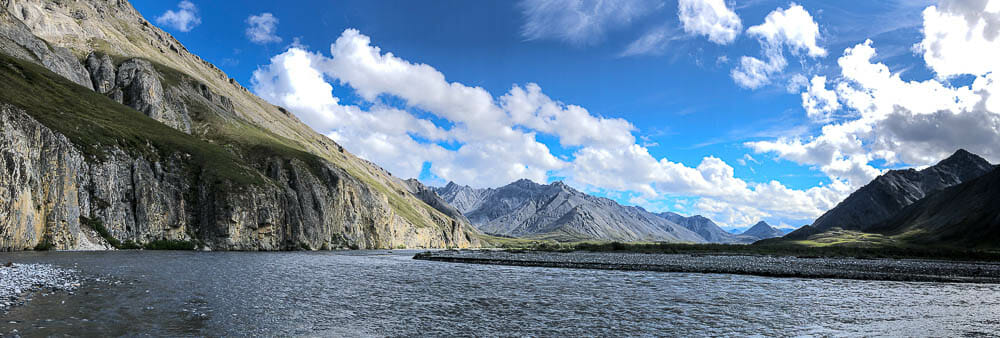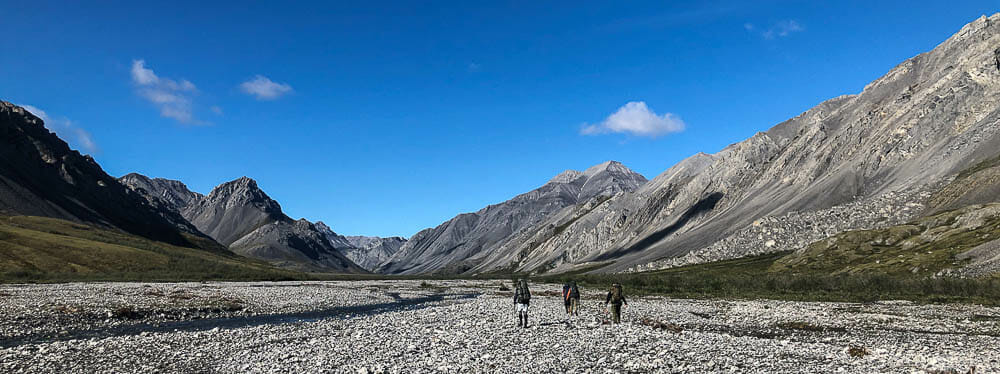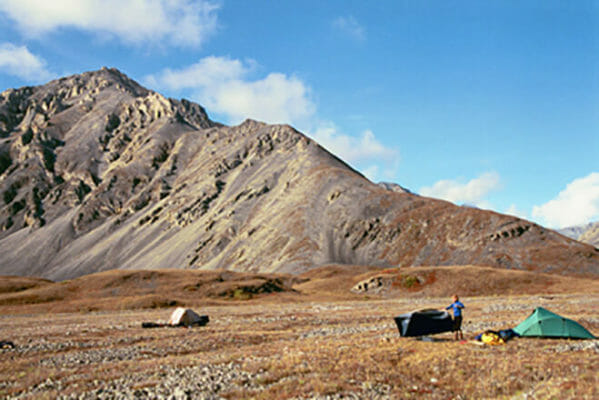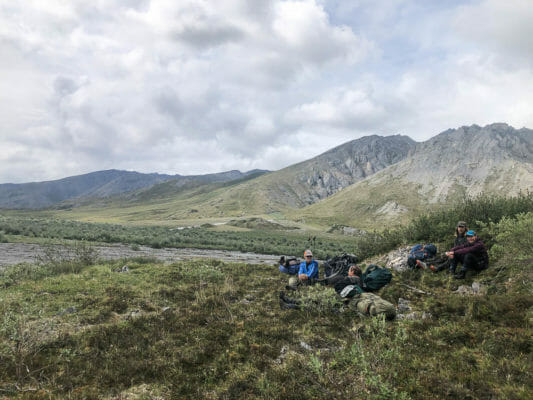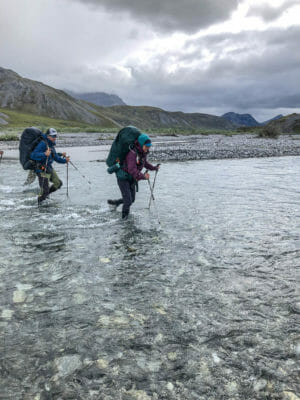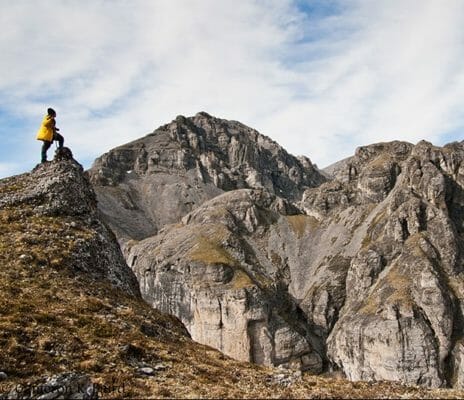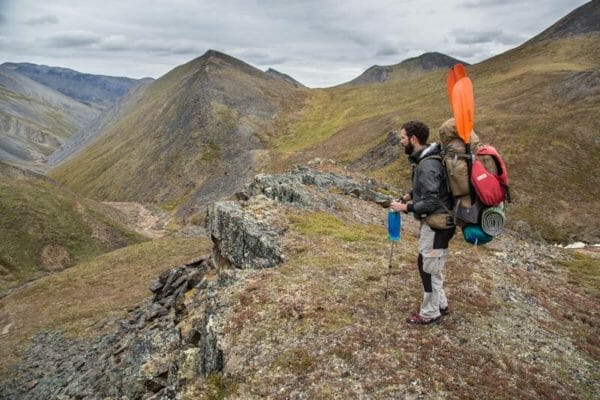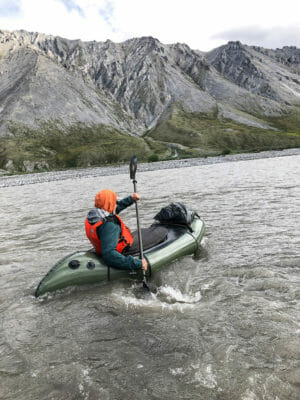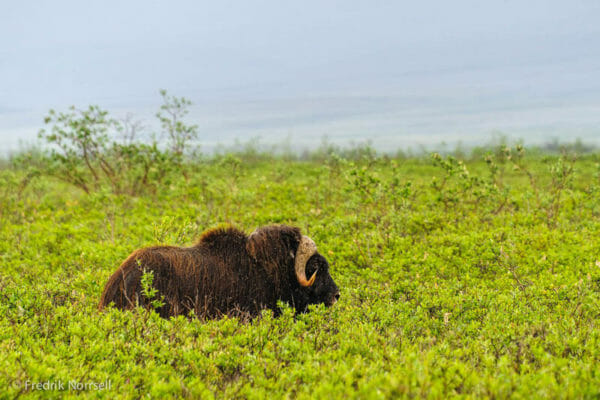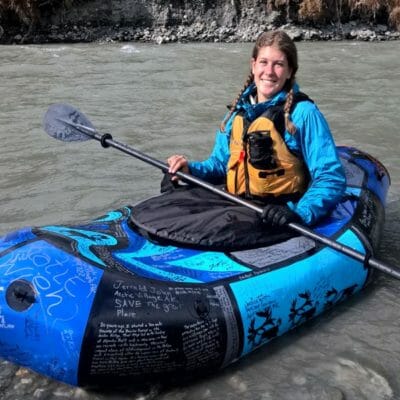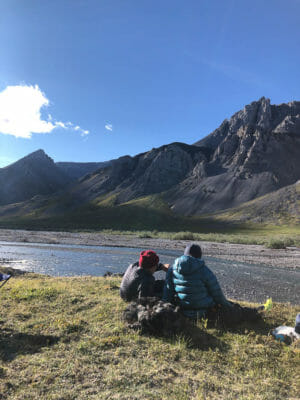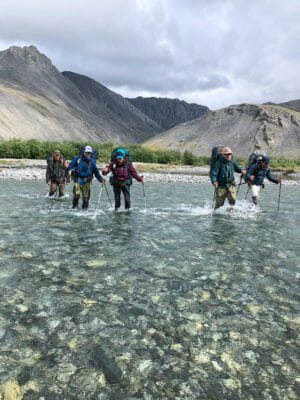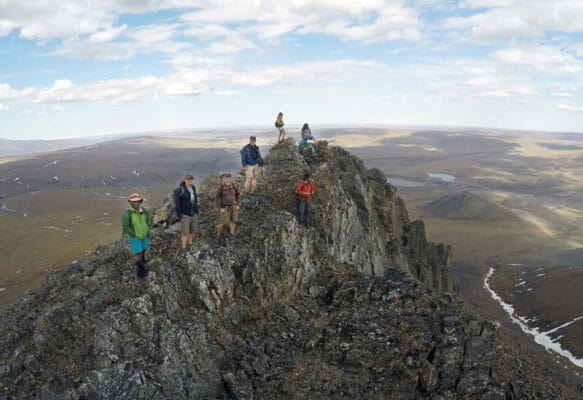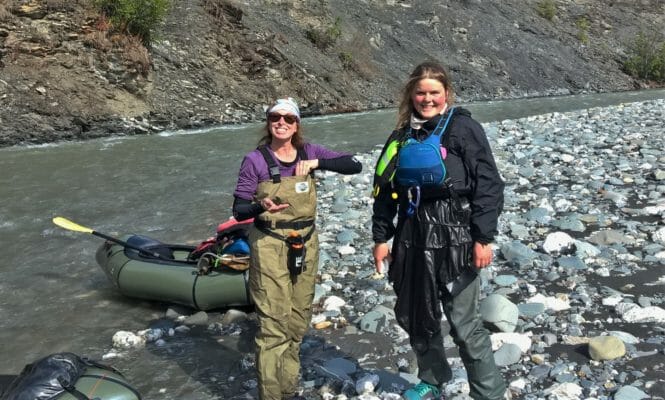Last updated: September 8, 2024
Itinerary
What follows is a general flow of events. Expect the unexpected and prepare to be flexible.
Contact us to start planning a custom trip on dates of your choosing
Meet your guide for a pre-trip meeting at 4 p.m. at the Arctic Wild headquarters in Fairbanks.
Day 1
Fly 350 miles north from Fairbanks, across the Yukon River and the Arctic Circle to the headwaters of the Marsh Fork of the Canning River. After hiking to a suitable campsite, we will make camp, eat dinner and then take a hike to survey the endless wilderness.
Day 2
We work our way up the Canning and over the first low pass, skirting Annette Peak and camping west of Porcupine Lake. Packs will be heavy, but the footing is good and the scenery unbeatable.
Day 3 - 4
We hike through the maze of valleys and canyons which eventually form the Ivishak, enjoying the solitude and magnificent wilderness. Once we hit the Ivishak proper we will need to walk downriver to where we judge the river is big enough to carry us. We will try and camp early enough in the day to have an opportunity to explore without packs deeper into the mountains each evening.
Day 5
The river trip starts! Before launching, your guide(s) will train you in the art of packrafting and river safety. Once you are feeling confident and packs are secured to the deck of the packrafts, you begin your descent towards the ocean. The river is small and rocky and you may need to get out occasionally to nudge your boat between rocks or over shallows. The scenery alone is worth the effort and there will be time to lean back in your raft and watch the tundra go by later in the trip.
Day 6 - 7
Once you get the knack of following your guide through the deepest water, you will make good time and can scan the banks for bear, wolf, and caribou. Traveling downriver, wildlife changes along with the scenery.
There are big sections of shallow braids and some fun Class II sections to splash through. On traveling days expect to spend 5 or 6 hours on the water, which leaves plenty of time for hiking, fishing and relaxing in this sublime landscape.
Day 8
The horizon yawns in the north as we approach the northern edge of the Brooks Range. Sadly the trip is over. Pack-up and begin listening for our airplane. When it arrives (weather permitting) we reluctantly load our gear and shuttle back to Fairbanks, arriving in time for a late dinner. A shower is in order.




